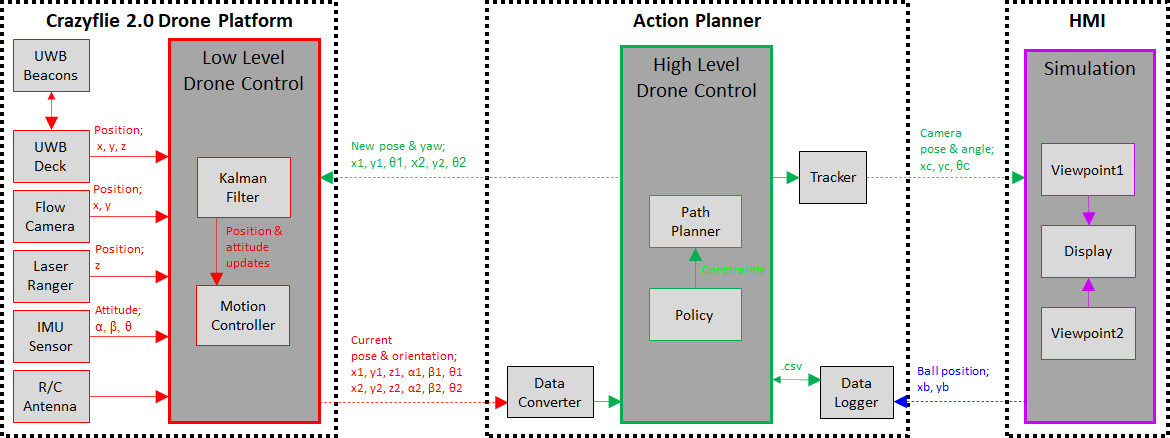System Architecture MSD19: Difference between revisions
| Line 51: | Line 51: | ||
==Realised== | ==Realised== | ||
Definitions | |||
[[File:Realised.png]] | |||
Explanations | |||
=Layered System Hierarchy= | =Layered System Hierarchy= | ||
Revision as of 13:23, 24 March 2020
Contents
Architectural Framework
Autonomous drone referee system architecture has been implemented by taking into account both CAFCR[1] and SafeRobots[2] frameworks. The focus in the project has been heavily concentrated towards the design and implementation having derived the requirement specifications and hardware resources available As a tailored approach to our goal the team developed the system level reasoning based on abstract knowledge defined in the Problem space. These were the requirement chosen to be most critical, the context of the problem and which problems we strive most to address. Then design choices were made based on thereof to define the Solution Space consisting of hardware and other tools to utilise, algorithms for path planning and communication protocols. This namely was the design time and opportunity to mitigate uncertainties. In the operational space covers the process of developing tangible deliverables that satisfy functional and non-functional requirements that were initially prescribed.
The overall methodology of our roadmap can be found in the table below:
Problem Space
- Requirement1: Develop a safe system that will not cause damage or harm in case of malfunction
- Requirement2: Choose a solution that will enable to develop the project from simple to complex
- Requirement3: Formalize solution such that it can be transferrable to future work
- Context1: Drone platform and display
- Context2: Robot soccer MSL
- Problem1: How to track a ball for a referee such that they can make clear decisions
- Problem2: How to design a system using low computational resources
Solution Space
- Perception: Computer vision, Deep NN
- Navigation: Path planning in 1D, Path planning in 2D
- Platform: Crazyflie, Sensors, Camera, Power
- Communication: UWB, Radio
Operation Space
- Middleware: ROS, Crazyflie
- External Code Libraries: Craztflie_lib, OpenCV, libraries in Python
- Implementation: Executable software code, Virtual simulation
- Deployment: Model tests, hardware tests, software debugging
System Decomposition
Strategy
Definitions
Explanations
Realised
Definitions
Explanations

